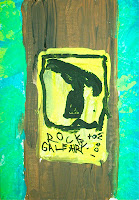02 Apr Pt 1 :: Making Room For Autism In Our Canoe – We Used To Canoe Too
Dig this: April 2nd is World Autism Awareness Day (WAAD) and April is also known to many as Autism Awareness Month. This multiple part story/part guide, written in honour of The Six Degree Project (Autism Awareness Celebrity Campaign) and WAAD, is the tale (with tips) of how we got to the end of the portage with our son. With hopes to help raise awareness about autism and the extra challenge it brings to lives of many families, including ours; we also hope this Making Room For Autism In Your Canoe “series” helps to inspire other families to get out there and live their dreams as best as they are able – because even though, with autism, our lives are different – they shouldn’t be less. Thanks to our family and friends who have shown their support and a special thank you to Hap Wilson for showing his support for autism awareness and acceptance. ~Fiona
 When our son, Makobe, received his diagnosis of autism at the age of two, we really didn’t realize just how much our lives were going to change. My husband and I had met and it didn’t take us long to find that a mutual love and passion for paddling and the outdoors were not the only things we had in common. Soon, after an extended travelling trip to B.C., we were married. Two years later we had our beautiful son. Even still, our relationship and careers were built and shaped by the paddle sports industry. We lived for paddling. However we soon realized Makobe’s autism, with his over-hyperactive behaviours and inability to self-regulate, had made it nearly impossible for us to continue our regular paddling and wilderness canoe trips as a family.
When our son, Makobe, received his diagnosis of autism at the age of two, we really didn’t realize just how much our lives were going to change. My husband and I had met and it didn’t take us long to find that a mutual love and passion for paddling and the outdoors were not the only things we had in common. Soon, after an extended travelling trip to B.C., we were married. Two years later we had our beautiful son. Even still, our relationship and careers were built and shaped by the paddle sports industry. We lived for paddling. However we soon realized Makobe’s autism, with his over-hyperactive behaviours and inability to self-regulate, had made it nearly impossible for us to continue our regular paddling and wilderness canoe trips as a family.So after years of practicing and planning, we had finally made it! Yet there was more to this journey than we realized. Yes, we had learned how to make room for autism in our canoe; but by doing so, we had also learned how to better make room for autism in our lives. With the help of visual aids, the proper teaching techniques, breaking the big skills down into individual skills before being taught as a whole, Dr. Vince Carbone’s Verbal Behaviour (VB) protocols, plus lots of patience and creativity – we realized that our son could do anything he put his mind too with our support and encouragement. Not to mention the principles of ABA (and VB) can be applied anywhere – yes, even on a portage!
Start’em Young
So while much of the tactics we used and will be sharing are for families of children with autism or special needs, much of this approach could also be applied to paddling with any child, really. It is important to remember that how our parents spent time with us as children influenced our idea of comfort when we later became adults. The more positive time you spend outdoors, in nature, with your children (at any age) – the greater chance they will seek out the wilderness later in life and with their own children as their chosen pastime. Getting young children to feel comfortable and enjoy spending time in the the outdoors is important; and remembering our connection with Nature is paramount for our survival on this planet. Besides, getting your hands filthy with camp dirt and feeling your feet get wet in the warm summer waters of a fresh water lake – or the salty sea – is something that everyone should have the pleasure of experiencing in their lifetime. And when children see their parents enjoying an outdoor experience and simpler life-style, they do too. It is also important to remember whether the child has autism or not – there is always room in a canoe for fun!
Coming NEXT: The Journey Begins, Paddling at Home





Sorry, the comment form is closed at this time.